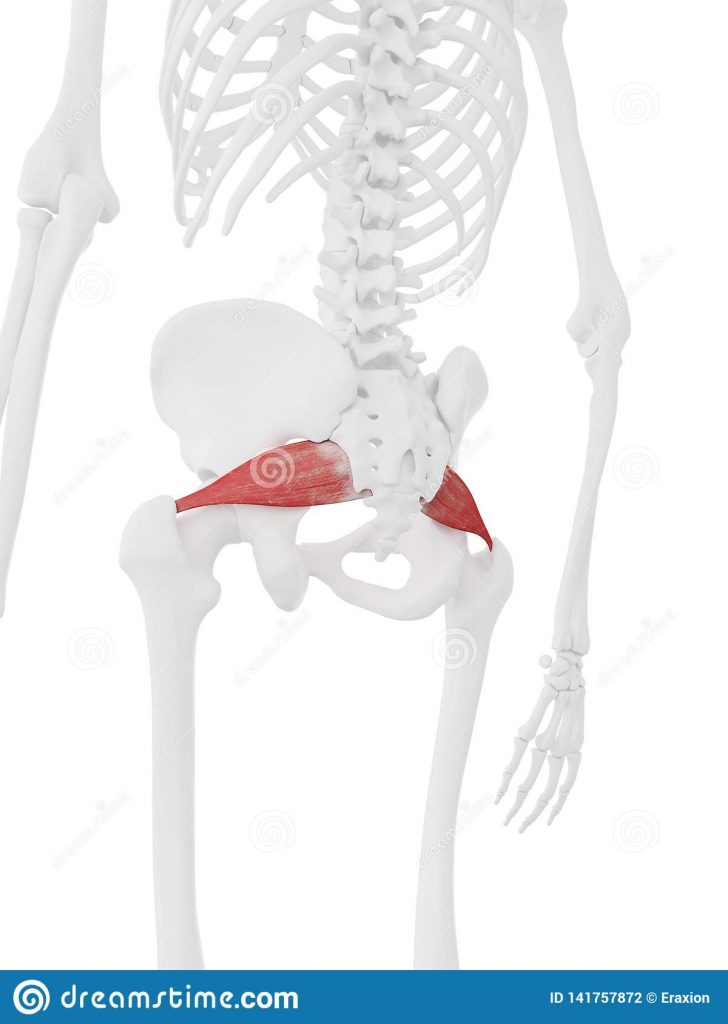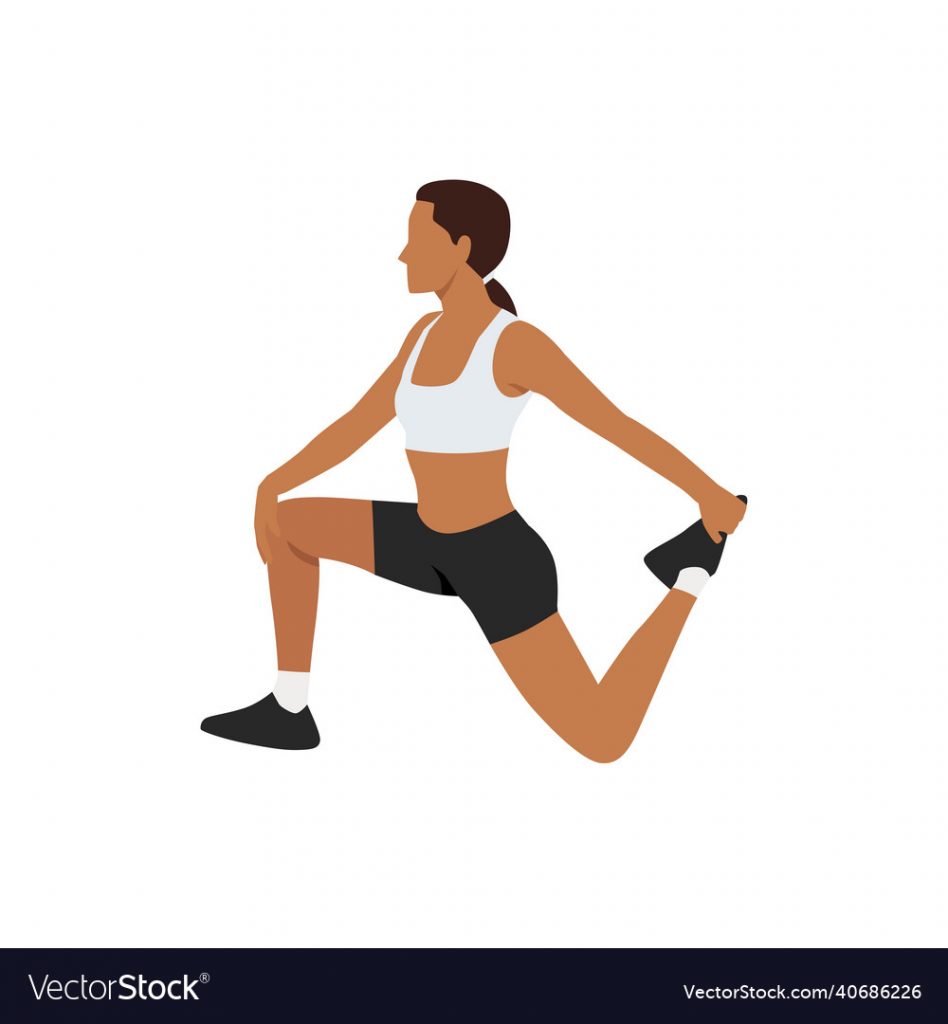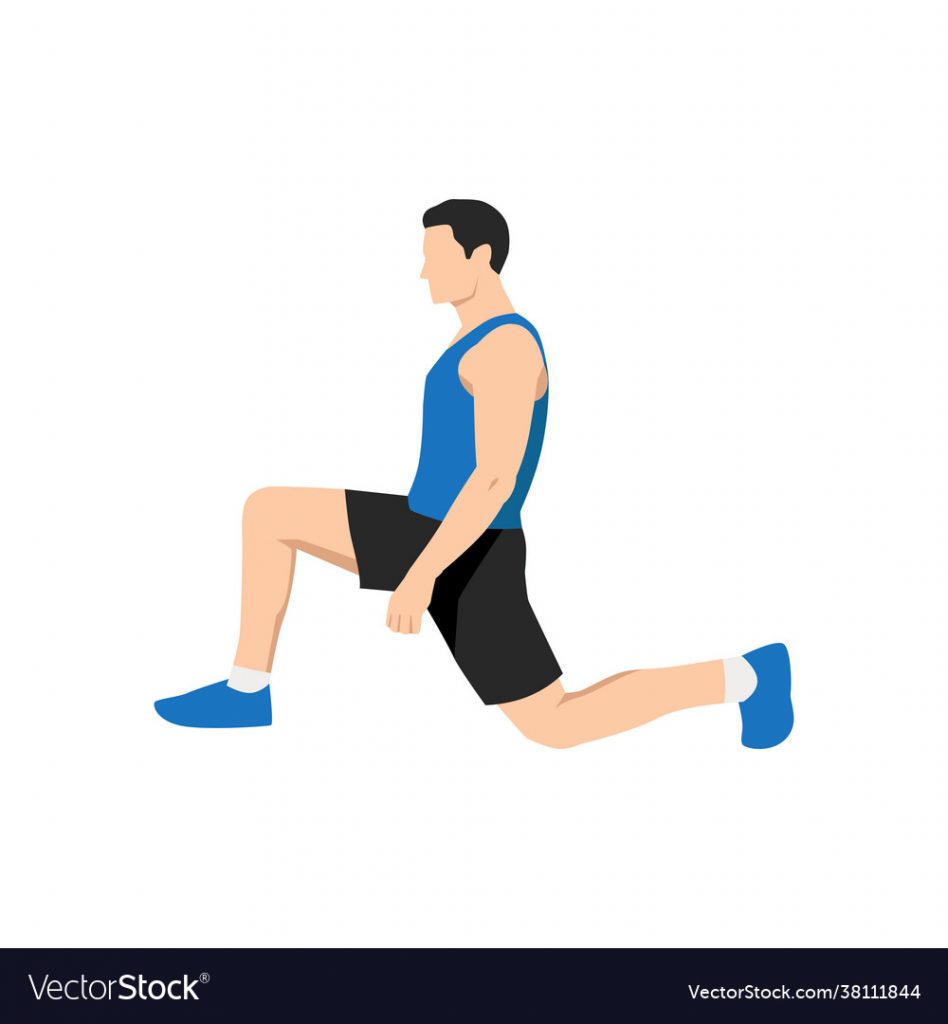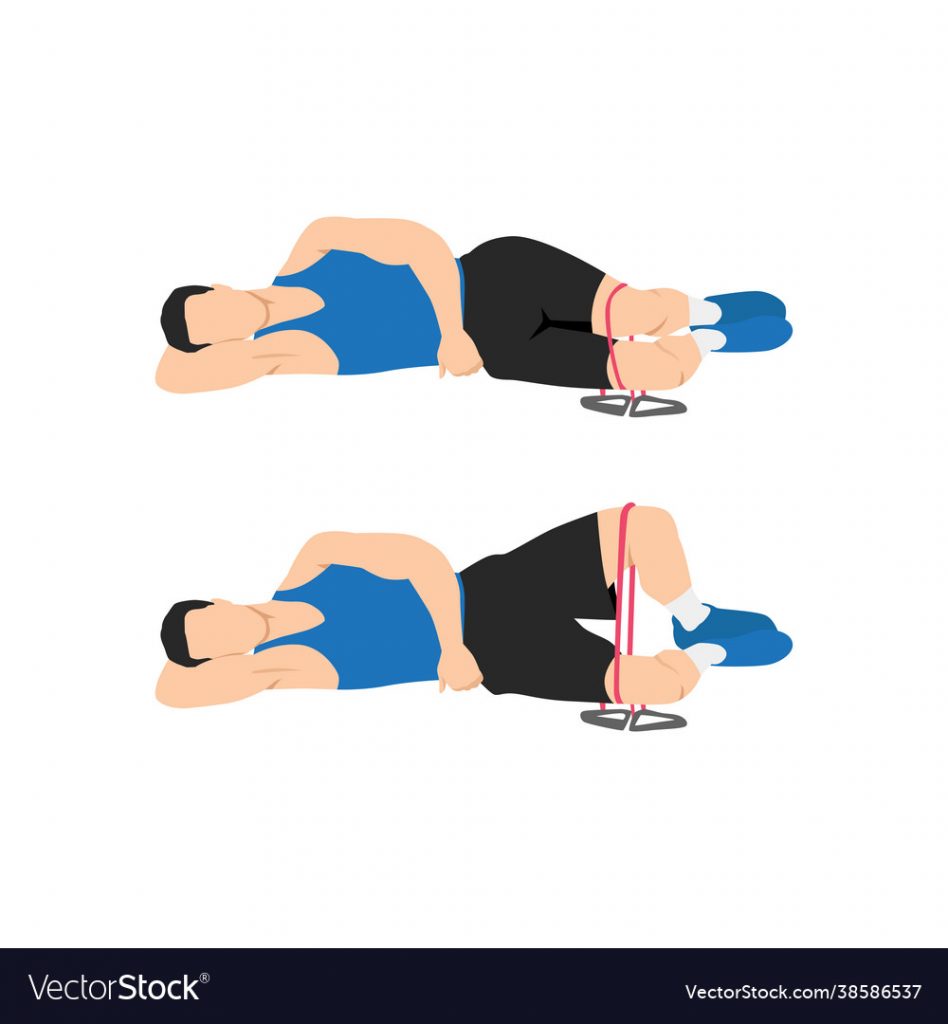This article is a continuation of the article on how to take care of the body for people who work in front of the computer for a long time or people who have problems from sitting for a long time. This talks about the piriformis muscle, its symptoms, causes, and how to relieve it.

From www.dreamstime.com
The human body consists of many parts such as organs, bones, blood, one of the most important things is muscles which is something that we use often in our daily life. With the leaping development of humanity that can combine many works into the computer, we have to sit in front of the computer screen and use it for a long time. This can cause some muscles to be overused and cause abnormalities.
Piriformis
The piriformis muscle is a deep muscle behind the buttocks as shown in Figure 1, it is responsible for controlling the spread of the legs. By contracting the muscles to make the legs open. And when the muscles relax, it will close the legs. This part of the muscle is a small muscle that is located on the nerve that goes down to the leg as shown in Figure 2.

From www.disc-kuwait.clinic
Symptom
If this muscle has a problem, it will cause the patient to have pain in the lower back above the buttocks and crack down the leg, which may cause numbness of the feet. If they were left for a long time, it may cause leg muscles atrophy. Because when there is pain, we can use the leg muscles less often. The symptoms shown may be the same as other diseases, such as herniated nerves. Therefore, it is necessary to analyze the symptoms well before because the relief of each disease is not the same.
Cause
The cause of Piriformis syndrome or hip flexor nerve disease that occurs for many reasons, such as sitting for a long time, standing for a long time, lifting heavy objects, this muscle is too weak or the opposite muscle is too strong until it is out of balance, such as the front thigh muscle is a large muscle, have a lot of muscle mass and was used every day while walking or running. This makes this muscle very strong and if not relaxed at all, will make this muscle tense and pull the Piriformis forward, causing the Piriformis to press on the nerve as well.
Relief method
At this point, everyone, don’t be shocked that this symptom can only be relieved or not. But fixing takes time. If someone has a lot of symptoms, it can reduce symptoms. Those who have fewer symptoms may recover faster. The relief can be done in several parts, namely
- Stretching the causative muscle, Piriformis, which temporarily relieves.
- Stretch opposite muscles such as thighs and the lower abdomen.
- Strengthen Piriformis, a better choice.
Stretching the Piriformis Muscle
Form 1, sit on a chair, then put the same leg that you want to stretch upon the knee of the other leg. Sit with your back down and lean forward as shown in Figure 3 for about 30 seconds for 3 sets.

From www.dreamstime.com
Form 2, do the preparation of the double press on the floor. Bring the leg you want to stretch forward. Bring your toes to the opposite side. Then, with a straight back, press down and bend slightly. When it’s tight, gradually increase the tension as shown in Figure 4, about 30 seconds per set, 3 sets should find something to support the floor to be a bit soft. If anyone does it and it’s too tight, you can put a pillow on your bottom.

From sportdoctorlondon.com
Stretching the muscles on the opposite side
Form 1, kneel on the desired side, let the opposite side be perpendicular to the floor. Then use the same hand as the leg you want to extend, grab the toe and pull it towards the back as shown in Figure 5 for about 30 seconds per set, 3 sets, should find something to support the knee to prevent injury.

From www.vectorstock.com
Form 2, kneel on the side you want to stretch down. Move the other leg forward. Then pull your body forward with your front leg perpendicular to the floor and feel a tightness in your lower abdomen, as shown in Figure 6, about 30 seconds per set, 3 sets.

From www.vectorstock.com
Piriformis muscle strengthening
Form 1, lie on your side with the desired side up. Bend both legs. Open the upper leg up and hold for 1 minute, as shown in Figure 7, total 3 sets per side. If you want to increase the intensity, you can find a rubber band to pin the legs.

From www.vectorstock.com
In addition, another recommended exercise is walking backward. This is because the anterior and piriformis muscles differ greatly in mass. If we strengthen the other muscles, the back of the legs will help the muscles to be more balanced. Walking backward will strengthen the hamstring muscles and reduce the amount of knee effort compared to running forward. And there are many more benefits that will be told next time.
Conclusion
The piriformis muscle is the muscle behind the buttocks. It’s part of the office staff having a lot of problems causing the muscles to press on the nerves down the leg causing pain down the leg. Relief can be done in several ways, including stretching and strengthening the muscles to improve the balance between the muscles. In addition to this muscle, then you should take care of other muscles to be strong all the time. for a better quality of life.
(C) 2022, By Jarut Busarathid and Danai Jedsadathitikul
Updated 2022-03-12